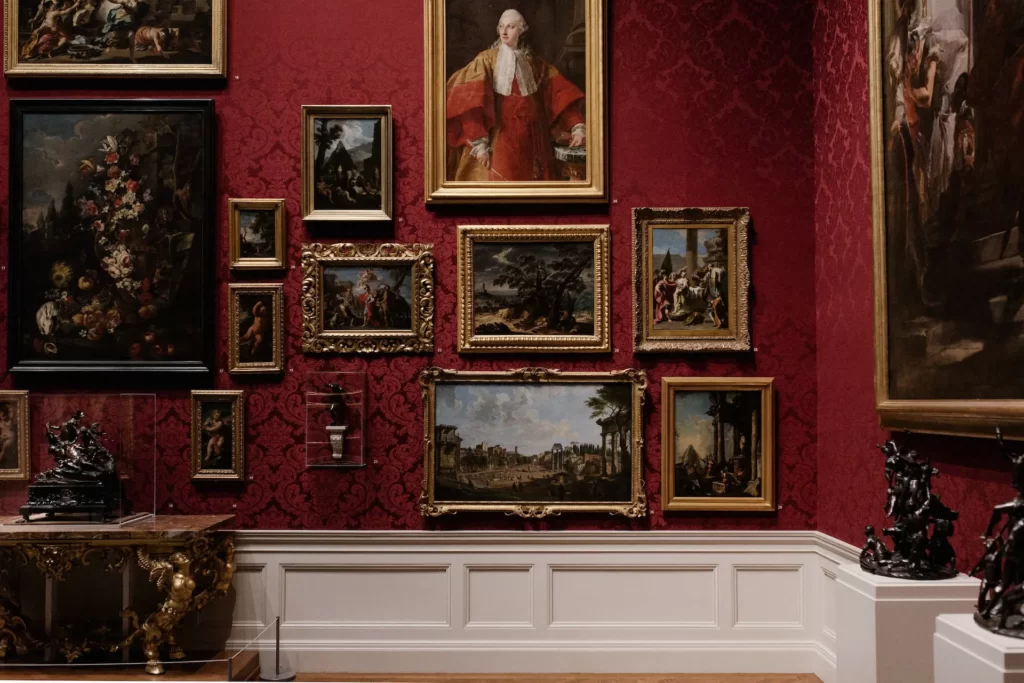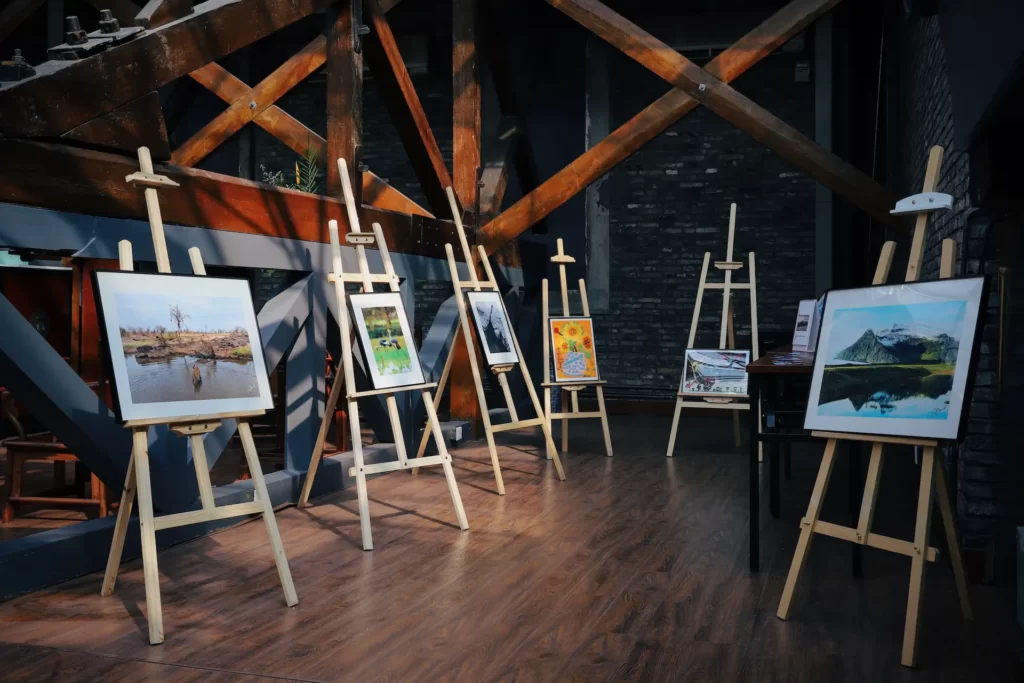
Balancing Act: Weighing The Pros And Cons Of Art As An Investment
Investing in art is a captivating endeavour that brings together the seemingly disparate worlds of finance and aesthetics. In Liverpool, a city rich in cultural heritage and artistic expression, this marriage takes on a special significance. Unlike conventional investment avenues, art offers a unique blend of financial potential and emotional value, making it an intriguing choice for individuals seeking both monetary returns and cultural enrichment.
However, it’s crucial to recognise that the art market comes with its own set of distinctive challenges and risks. In this exploration, we will provide an in-depth analysis, weighing the advantages and disadvantages of art as an investment.
Pros of Investing in Art:
Portfolio Diversification:
Diversification is a key principle in investment strategy, especially when considering Liverpool’s dynamic economic landscape. Art introduces an additional layer of diversification that can shield investors from the volatility of traditional markets. Historical data has shown that art’s performance often remains independent of stock market fluctuations, making it a potential hedge against economic downturns. In Liverpool, where cultural events and creative industries thrive, a well-constructed art portfolio can act as a stabilising force, mitigating losses in other asset classes while contributing to the city’s vibrant arts scene.
Aesthetic and Cultural Value:
In a city like Liverpool, known for its iconic landmarks and creative spirit, owning a piece of art provides a profound cultural connection and aesthetic pleasure. Each artwork carries a story, reflecting the artist’s vision and the city’s history. This emotional engagement can yield intangible benefits that extend far beyond monetary gains, creating a more meaningful and multifaceted investment experience deeply rooted in Liverpool’s artistic fabric.
Potential for High Returns:
Liverpool’s thriving art scene has witnessed remarkable appreciation in the value of select artworks over the years. Pieces created by renowned local artists or those inspired by Liverpool’s unique charm can experience exponential growth in value. These success stories exemplify the potential for art to generate exceptional returns, making it a potentially lucrative investment avenue for those who can identify and seize such opportunities within the city’s artistic community.
Status and Prestige:
Beyond financial rewards, art investment can bestow a sense of prestige and status upon the investor. Owning valuable artworks places individuals in an elite circle, providing access to exclusive art events, galleries, and gatherings. This immersion in the art world not only amplifies social status but also offers a platform for networking and cultural enrichment, creating a unique form of investment satisfaction.
Tangible Asset:
Unlike intangible financial assets like stocks or bonds, art is a tangible possession. It’s a physical entity that can be seen, touched, and experienced directly. This tangibility adds a layer of engagement that virtual investments lack. Owning art transforms the investment experience into a daily interaction with creativity and craftsmanship, enriching one’s environment and fostering a deeper connection to the investment itself.
Philanthropic Opportunities:
Art holds the potential for philanthropy, allowing investors to align their financial goals with their desire to contribute to cultural institutions and public good. By donating artworks to museums or galleries, investors can support artistic endeavours, preserving cultural heritage and ensuring access to art for future generations. This avenue of giving adds a dimension of social impact to the investment journey.

Cons of Investing in Art:
High Entry Costs:
Acquiring valuable art demands a significant upfront financial commitment. Beyond the purchase price, investors must factor in costs related to insurance, maintenance, potential restoration, and transportation. These expenses can accumulate quickly, making art investment prohibitive for those without substantial capital.
Subjectivity in Valuation:
Unlike traditional investments, art’s value is deeply subjective. Factors influencing valuation include the artist’s reputation, rarity of the artwork, its condition, and prevailing market trends. Valuing art requires expertise, and even then, differing opinions can lead to variations in price appraisal. This subjectivity can introduce uncertainty and complexity into the investment decision-making process.
Risk of Forgery and Provenance Issues:
The art market is not without its share of challenges, including the risk of encountering forgeries and authenticity disputes. Establishing the provenance and authenticity of a piece demands rigorous due diligence and often consultation with experts in the field. The potential for encountering fraudulent artworks can cast a shadow of doubt over an investment’s legitimacy.
Maintenance and Care:
Owning art is not just about acquisition; it’s an ongoing responsibility. Artworks require proper care, suitable storage conditions, and adequate insurance coverage to safeguard their value. The costs associated with preservation and upkeep can impact the overall return on investment, adding a layer of consideration beyond the initial purchase.
Strategies to Mitigate the Cons:
Expert Guidance:
Collaborating with art experts, consultants, or specialised art investment firms can provide invaluable insights. These professionals can offer authentication support, market analysis, and guidance in navigating the complexities of the art world. Their expertise can help investors make more informed decisions, mitigate risks, and uncover investment opportunities.
Research and Education:
In a city celebrated for its cultural richness, building knowledge about Liverpool’s art history, local artists, genres, and evolving market trends is essential. This research can equip investors with the tools to make informed choices and discern potential investment pitfalls within the context of Liverpool’s diverse artistic landscape. A well-informed investor is better equipped to navigate the intricacies of art valuation and make decisions aligned with their financial goals and the city’s cultural ethos.
Diversification within Art Investing:
Similar to diversifying a financial portfolio, spreading investments across various forms of art, historical periods, and artists can reduce risk. Different segments of the art market may perform differently based on changing trends and preferences. Diversification increases the likelihood of capturing positive returns while minimising the impact of underperforming sectors.

Conclusion: Balancing Passion and Prudence
Investing in art encapsulates both excitement and challenges. It offers the allure of aesthetic pleasure, cultural engagement, and the potential for financial gains beyond traditional investment strategies. However, it also presents a nuanced landscape of liquidity concerns, valuation subjectivity, maintenance responsibilities, and market uncertainties. Achieving a successful art investment involves a delicate balance of aligning financial aspirations with personal interests.
While art investment may not be suitable for everyone, for those drawn to the artistic pulse of Liverpool, it promises a journey rich in experience and rewards deeply intertwined with the city’s cultural heritage. Beyond financial considerations, art investment intertwines culture, beauty, and the acumen required to navigate a unique market. It’s a journey that requires not only a passion for art but also a prudent approach to manage the intricacies of this distinct investment pathway.
In summation, the decision to invest in art within Liverpool involves a mindful evaluation of the pros and cons, weighed against individual circumstances and objectives. By understanding the complexities and nuances of both art investment and Liverpool’s artistic identity, investors can embark on a journey that transcends financial transactions, embracing art as a living embodiment of human creativity and expression that is deeply intertwined with the cultural fabric of Liverpool.







